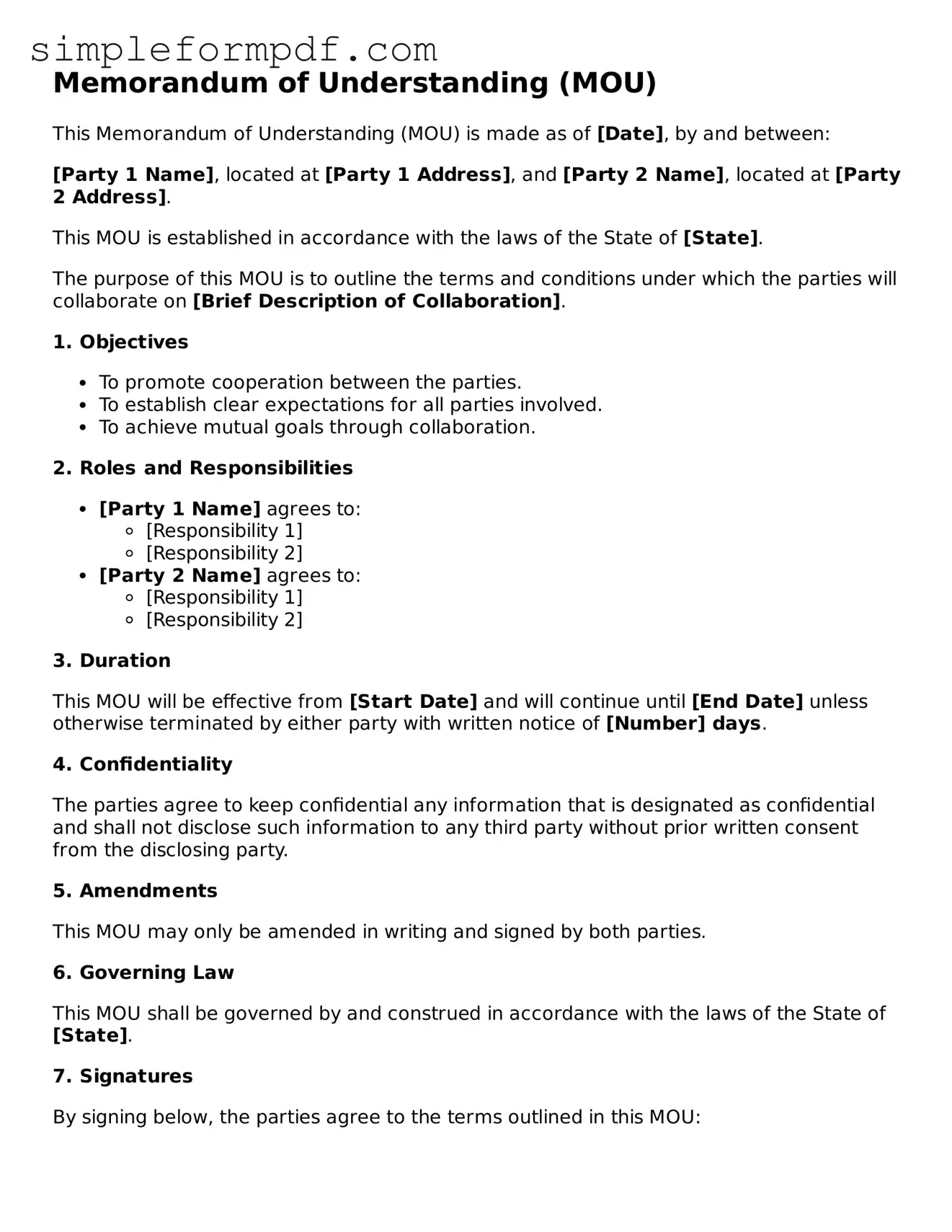Memorandum of Understanding (MOU)
This Memorandum of Understanding (MOU) is made as of [Date], by and between:
[Party 1 Name], located at [Party 1 Address], and
[Party 2 Name], located at [Party 2 Address].
This MOU is established in accordance with the laws of the State of [State].
The purpose of this MOU is to outline the terms and conditions under which the parties will collaborate on [Brief Description of Collaboration].
1. Objectives
- To promote cooperation between the parties.
- To establish clear expectations for all parties involved.
- To achieve mutual goals through collaboration.
2. Roles and Responsibilities
- [Party 1 Name] agrees to:
- [Responsibility 1]
- [Responsibility 2]
- [Party 2 Name] agrees to:
- [Responsibility 1]
- [Responsibility 2]
3. Duration
This MOU will be effective from [Start Date] and will continue until [End Date] unless otherwise terminated by either party with written notice of [Number] days.
4. Confidentiality
The parties agree to keep confidential any information that is designated as confidential and shall not disclose such information to any third party without prior written consent from the disclosing party.
5. Amendments
This MOU may only be amended in writing and signed by both parties.
6. Governing Law
This MOU shall be governed by and construed in accordance with the laws of the State of [State].
7. Signatures
By signing below, the parties agree to the terms outlined in this MOU:
_____________________________
[Party 1 Name]
[Title]
[Date]
_____________________________
[Party 2 Name]
[Title]
[Date]
